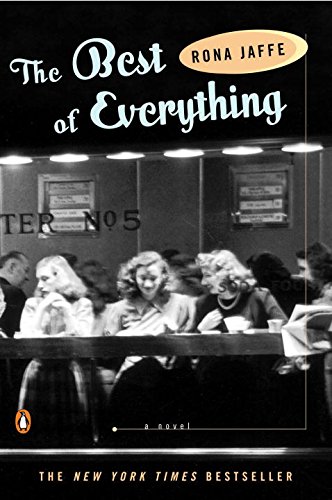Mad Men Book Club: The Best of Everything
Rona Jaffe's The Best of Everything is an early example of a now familiar genre: Chick Lit. This is the Sex and the City of its time, and it's worth reading for the glimpse it gives into the lives of working women in the 1950s. For a book written before the women's movement, there is a surprising amount of sex, ambition, and the tension between desires for home, hearth, and husband and desires for responsibility and fulfillment in the professional world. It's a real page-turner, with some happy endings, some sad ones, and some ambiguous ones, so I'd say there's something for anyone who enjoys "women's" fiction.
The Best of Everything in context...
In Mad Men:
Any Mad Men fan will recognize not only Don, but versions of Peggy, Joan, Megan, and others in this novel. There are even a few scenes that seem to have jumped right off the page and into the Mad Men script.
The Best of Everything doesn't get much screen time in Mad Men. The book appears in an episode dominated by another book -- Exodus by Leon Uris -- and we see Don reading it briefly in bed. One assumes that it's actually Betty's book, but The Best of Everything is a good book for Don because it provides some helpful insight into the lives of the working women who he shares his office with every day. Don may also read this book to help him navigate his burgeoning affair with Rachel Katz, a young, working business woman trying to carve out a path in a man's world, while balancing her business ambitions with the desire for marriage and her desire for a hopeless romance with Don Draper. If Don doesn't recognize himself in the book, then he probably has a hard time with mirrors, too.
In the fifties and sixties:
This book paints a wonderful portrait of the tensions of life for the pre-women's movement working woman. In her foreword, Jaffe says she based a lot of the book on her and her friends' lives, and that she interviewed several women to find out if the experiences she writes about were common outside of her friend circle. Even though this is fiction, The Best of Everything lifts the veil on our perception of 1950s chastity and talks candidly about issues that are still sensitive today -- all in the days before the release of the pill. (So those who say oral contraceptives encouraged sex outside of marriage may be missing how much sex was already happening outside those bounds prior to the pill's release. The book also hints at Betty Friedan's Feminine Mystique. The women of the novel want to desire a home and a husband, and their inner voices echo the cultural ones telling them that's what will make them truly happy. They suspect career fulfillment might also make them happy, but in the end, neither side wins the day, making Rona Jaffe a unique voice for her time, as she favors neither home nor career in her characters' quests for life's best.
Today:
This book is every bit as entertaining as any other chick lit I've read. Despite its firm grounding in its time, it feels fresh and current. Some women's issues never go away, and this novel plays on all of them. Especially relevant is the title and theme; how many women do you know who struggle daily with the desire and pressure to have "the best of everything" in life? We want the best looks, the best inner confidence, the best job, the best marriage, the best for our families -- and on, and on. "Having It All," however, may just be a myth. In real life, we make hard choices about which "best" things are most important to us, and we understand the need for sacrifice either on the home or career front.
Did anyone else read along with me? What are your thoughts?
Join me this time next week for our next book club pick, "Meditations in an Emergency."





Comments
Post a Comment
Thanks for leaving your kind and thoughtful comments.